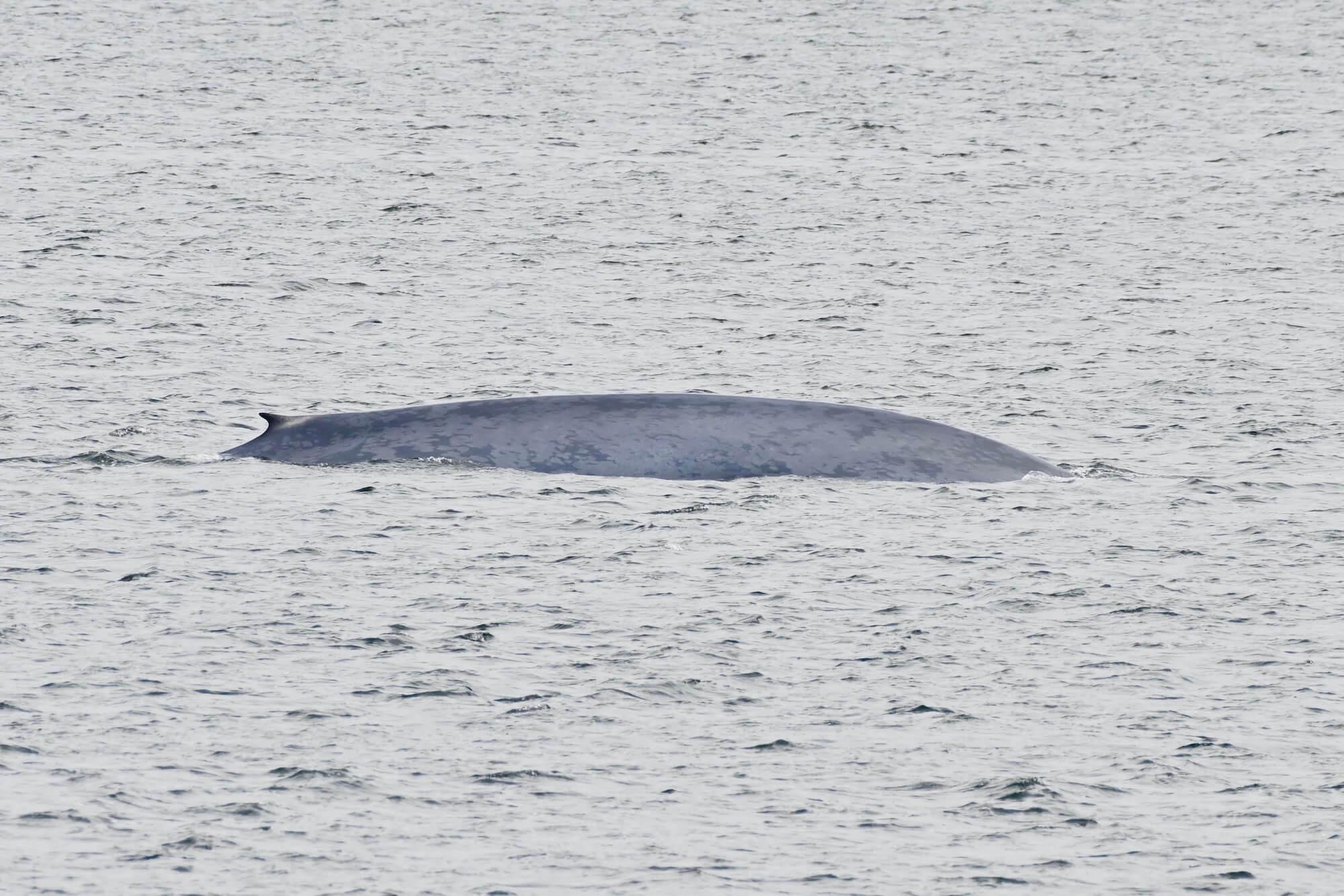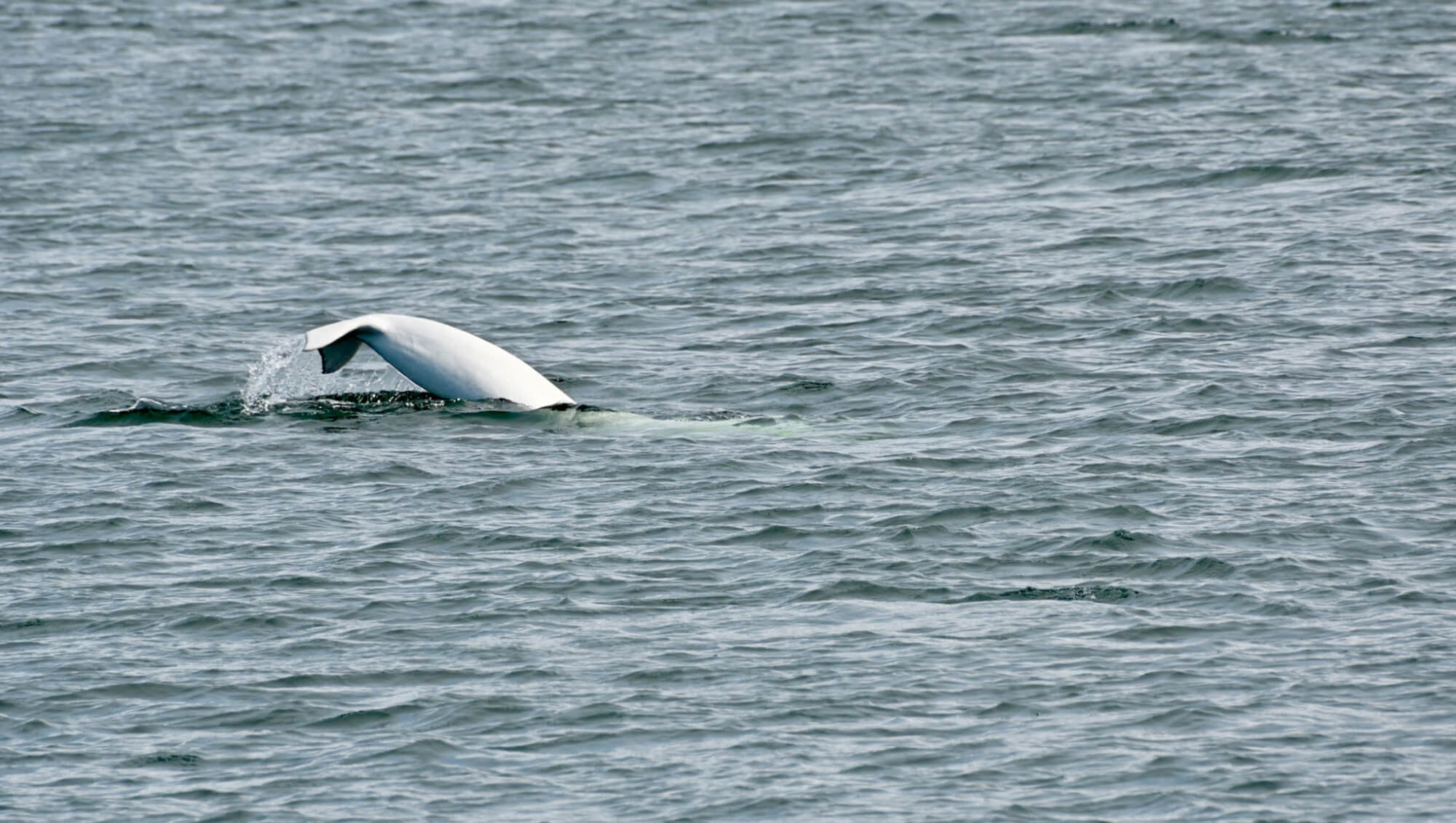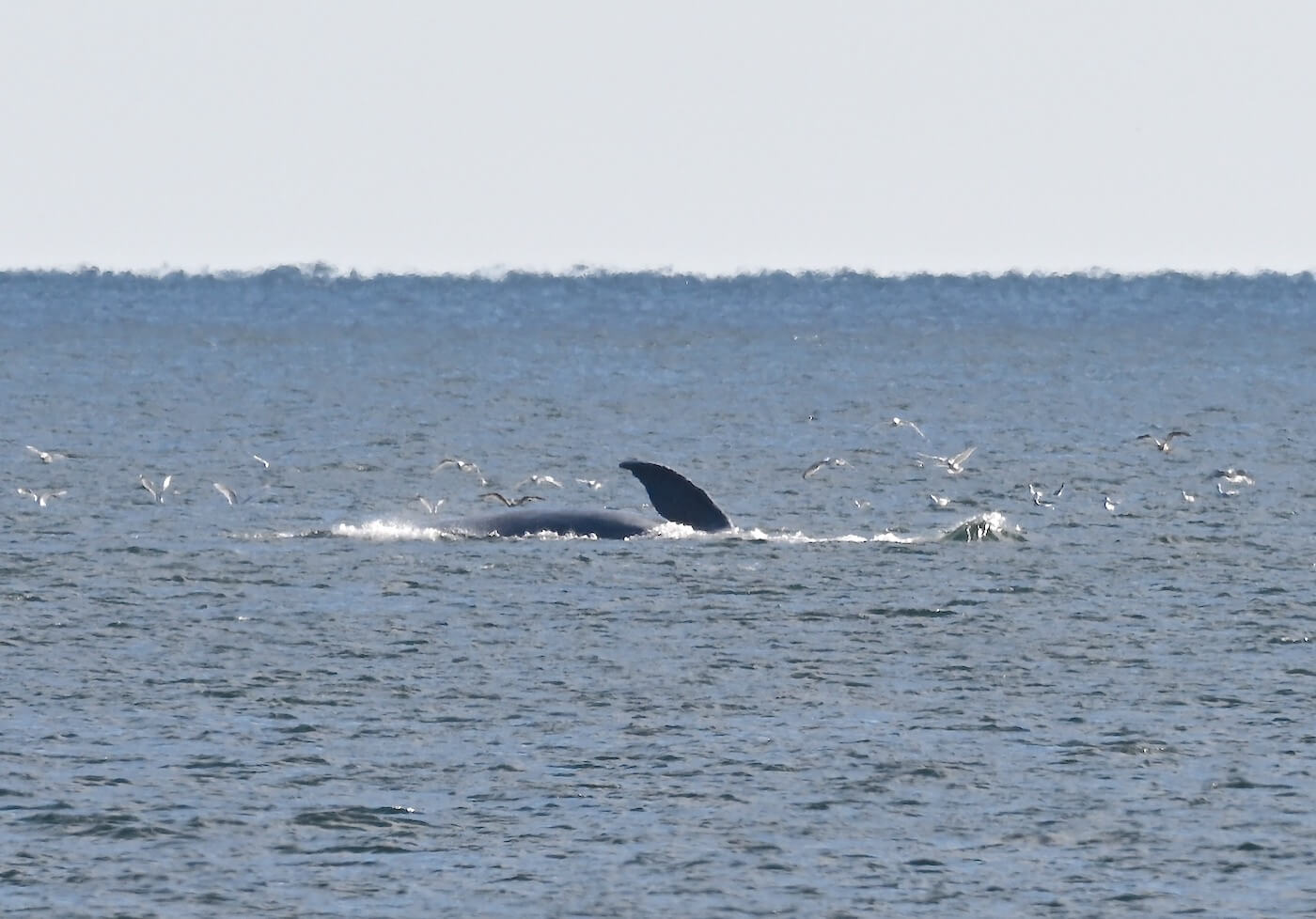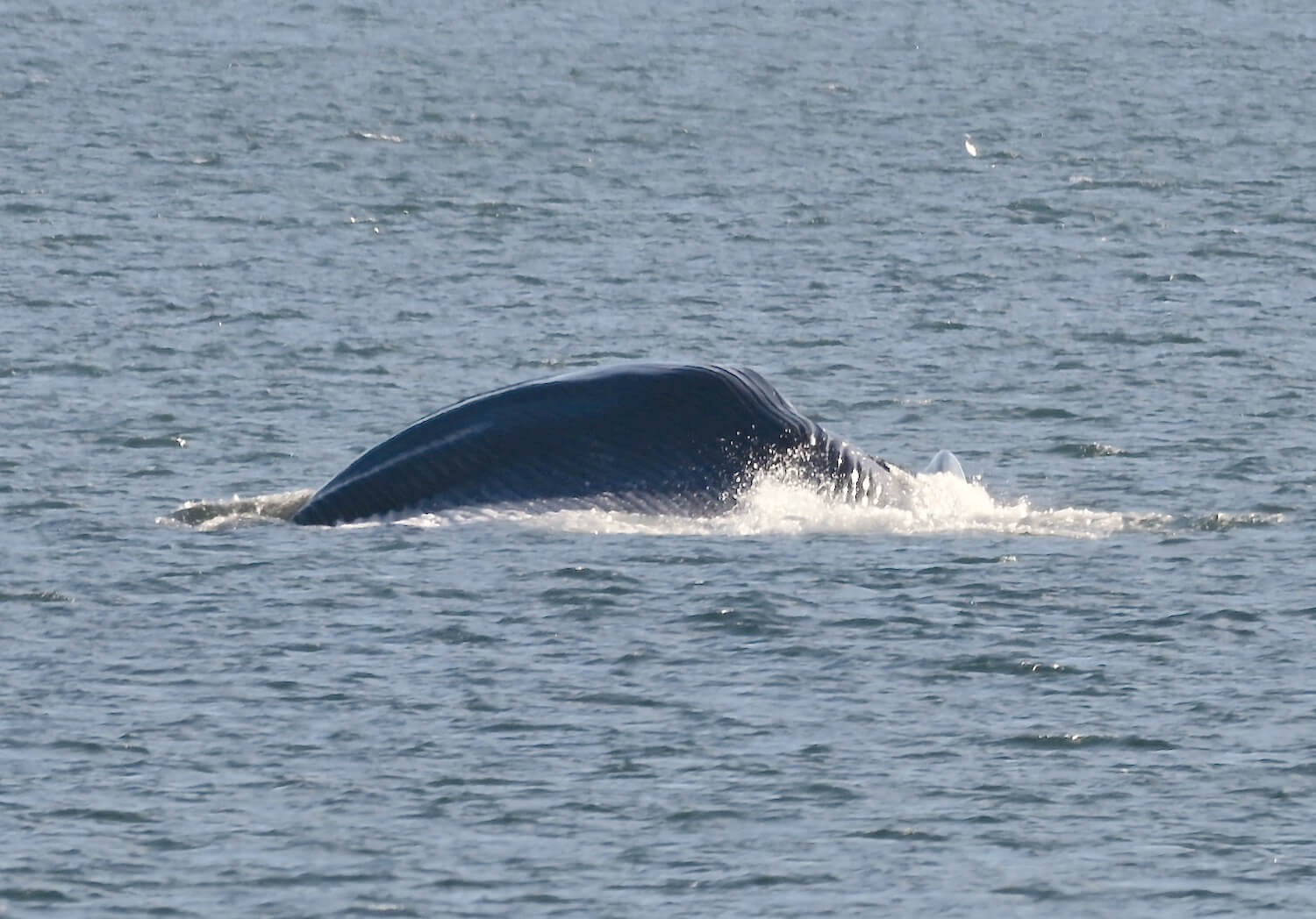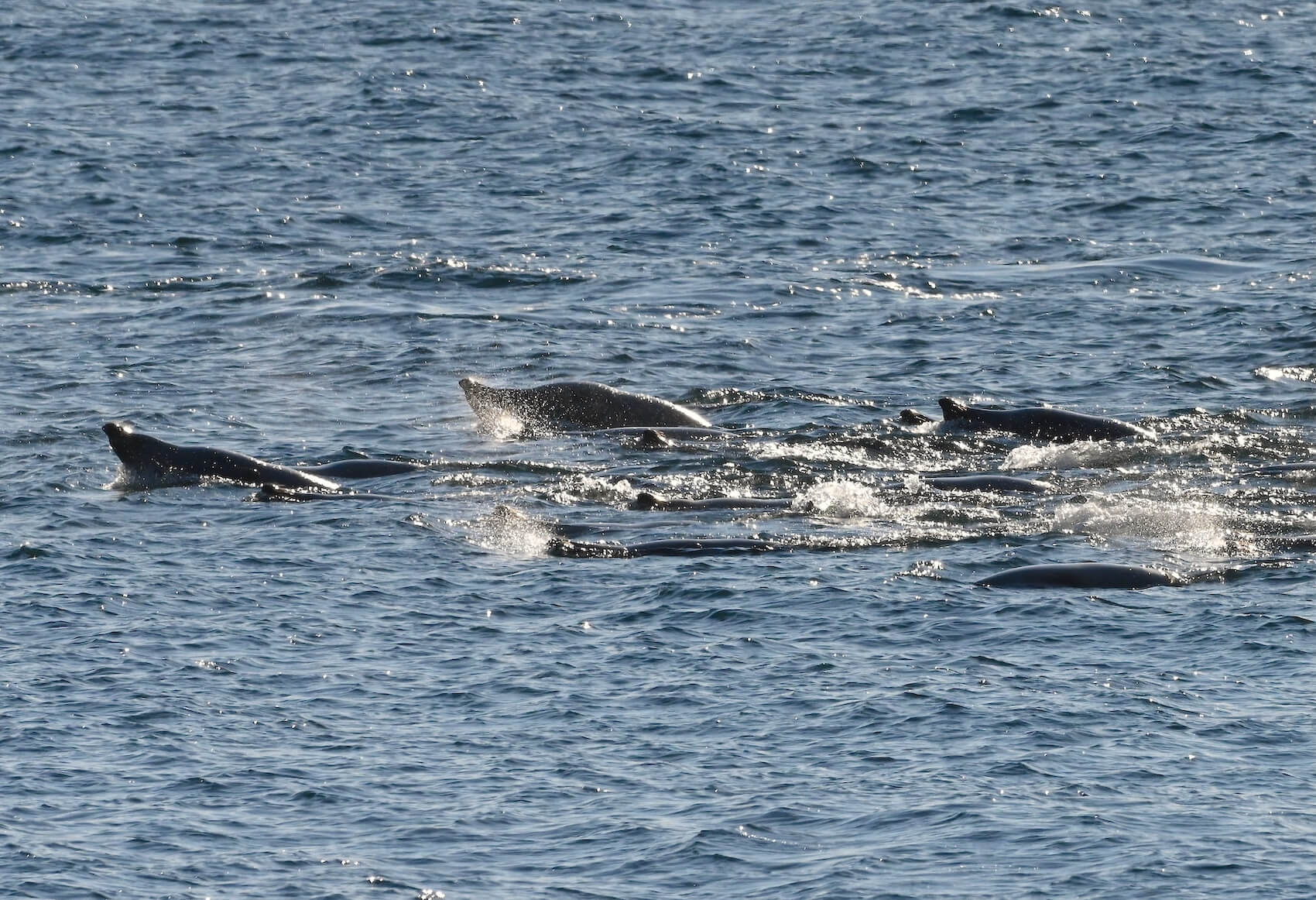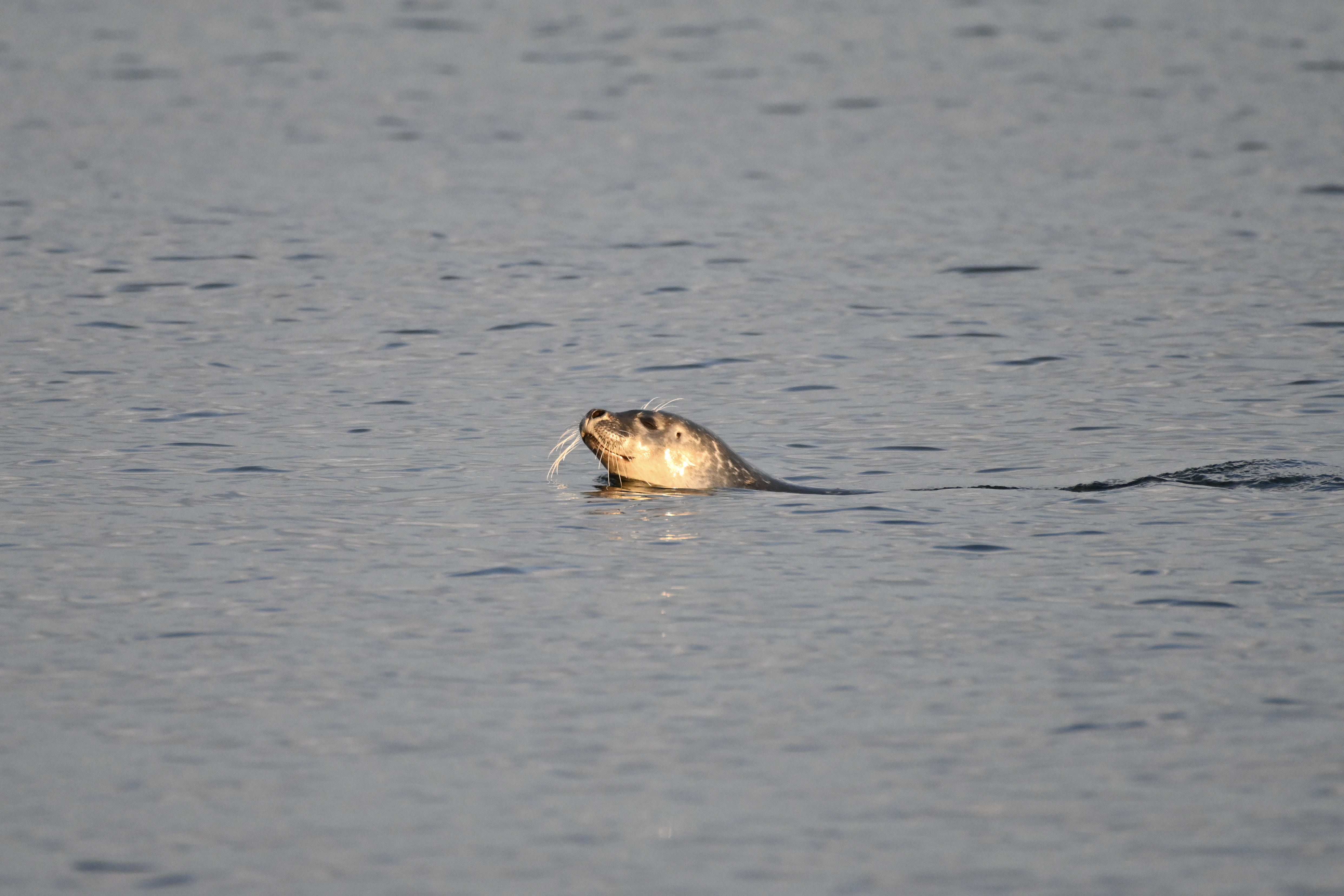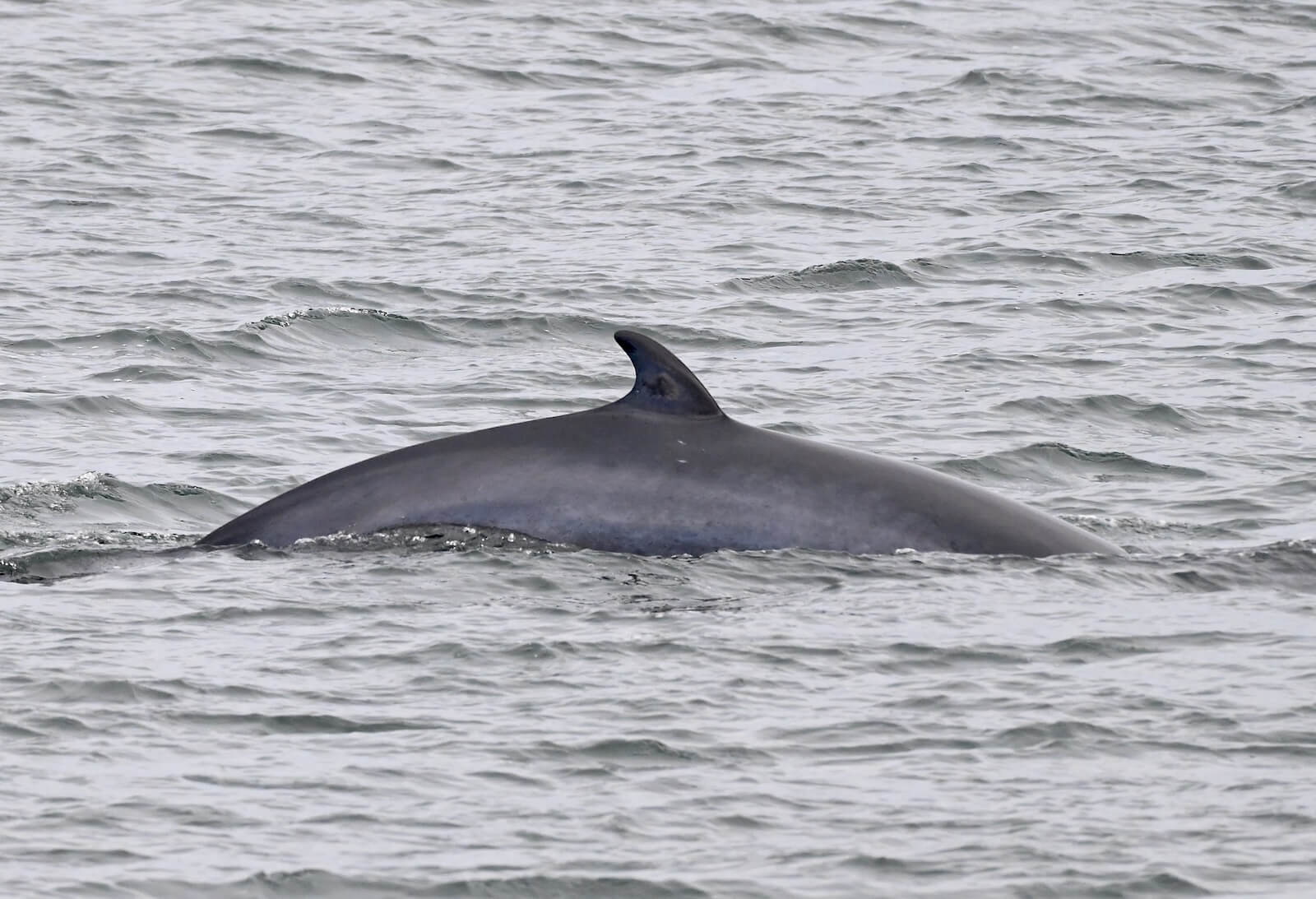“Lately I’ve been seeing spouts all the time! When I’m out for a walk, on my way to the grocery store, peering out my kitchen window… It’s pretty crazy,” comments a woman from Les Escoumins. As spring arrives, the towns that line the St. Lawrence Estuary are transforming. They’re no longer just places to watch whales; they’re whale towns!
St. Lawrence: Whale-watching capital
One after another, rorquals are blowing offshore. From downtown Baie-Comeau, plumes of mist can be seen rising above the water. Every time you look toward the river, you risk seeing a huge back or a dorsal fin breaking the surface. Two blue whales and a single humpback appeared to be in the area. From Sept-Îles, two minke whales and six harbour porpoises, perhaps the first ones this year!
The denizens of the St. Lawrence don’t live in houses or work in offices; they dive into the depths and feed at the surface, under the gaze of humans that gawk at them from shore. Between Les Escoumins and Tadoussac, it was a real parade of these giants of the animal kingdom. In total, there were no fewer than six blue whales, three fin whales – including the potential hybrid individual observed last summer – and a minke whale. One naturalist was surprised by the number of alcids passing through, namely razorbills and common murres: “Spouts and backs on the horizon, sometimes blue, sometimes white.” A myriad of belugas have been reported in the area in groups of up to fifty individuals.
To observe whales from shore, sometimes you have to brave the cold! One enthusiast had to wait several hours before finally spotting the famous cetaceans he had been waiting for. “I was starting to freeze and was getting ready to leave when a blue whale finally appeared less than 300 metres from shore. And then it was just a hundred metres away. Observations from shore are always a little special, and for me this one was even more exceptional.”
With their pectoral fins out of the water and ventral grooves extended, the feeding scenes of these large rorquals combined the grace of an aquatic ballet with the abundance of a floating buffet. For whales, feeding is crucial: These gigantic mammals need to ingest several tonnes of krill every day!
It’s when you are patient that you better understand why these moments are so precious, as they are both rare and fragile. The St. Lawrence beluga, blue whale, and fin whale all have one thing in common: They are endangered. Observing without disturbing, keeping one’s distance… This, too, is how we participate in the changing, resilient, and wonderful life of the St. Lawrence.
Seals in Gaspé
In Gaspé, a wildlife enthusiast saw large spouts as well as the back of a cetacean offshore. Near Penouille, a hundred or so seals were on the ice. While taking a walk on Haldimand Beach, she spotted a pup and quickly moved away. She probably read our article describing 5 good reasons to leave young seals alone.
Thanks to all our collaborators!
Special thanks go out to all our observers who share their love for marine mammals with us! Your encounters with cetaceans and pinnipeds are always a pleasure to read and discover.
On the water or from shore, it is your eyes that give life to this column.
Odélie Brouillette
Thalia Cohen-Bacry
Patrice Corbeil
Laetitia Desbordes
Véronique Gélinas
Jade-Audrey Lavergne
Virginie Lecourt
Diane Ostiguy
Renaud Pintiaux
Stéphane Pagès
Pascal Pitre
Guillaume Savard
Andréanne Sylvain
Marielle Vanasse
And to all the others!
Additionally, we would like to acknowledge the following teams that also share their sightings:
Sept-Îles Research and Education Centre (CERSI)
Group for Research and Education on Marine Mammals (GREMM)
Marine Mammal Observation Network (MMON)
Quebec Marine Mammal Emergency Response Network (QMMERN)
Mingan Island Cetacean Study (MICS)
Would you also like to share your observations?
Have you seen any marine mammals in the St. Lawrence? Whether it’s a spout offshore or just a couple of seals, drop us a line and send your photos to [email protected]!


